Slow Food And Wine In Langhe, Italy
As an Amazon Affilate, I earn commission on qualifying purchases.
If you’re a foodie, here’s why you need to plan a Slow Food and Wine Tour in Langhe, Italy. Last summer I had the good fortune to be invited to a slow food and wine tour in Italy. Many years ago I read Carlo Petrini’s book, “Slow Food Nation, Why Our Food Should Be Good, Clean, and Fair“.
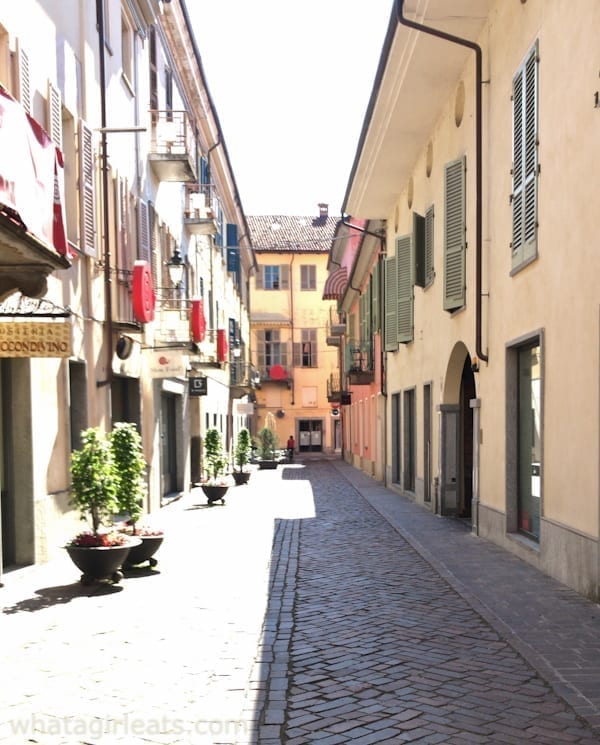
The Slow Food Movement
Petrini started the Slow Food movement as a anticdote to “fast food” and the opening of a McDonald’s restaurant in the late 1980s. So I was thrilled when I found out that we would be visiting Pollenzo, Bra and other Slow Food sites in the Langhe region Carlo mentions in his book. This wonderful excursion was spearheaded by Lucia from Turin Epicurean. Lucia is a fierce proponent of all things Piedmontese (Turin is the capital city of Piedmont). She also works tirelessly to promote the food, wine and culture of the area. Christina and I had spent a few days touring northern Italy before we ended up in Turin. Once in Turin, Christina, from Christina’s Cucina and I met a lovely group of like-minded foodies from England, Milan and the US. (Disclosure: I was hosted by the Best Western Langhe Cherasco, all opinions are my own.) One thing about the Langhe region is that it certainly isn’t over-run by tourists. Everywhere we visited was delightfully uncrowded! For the next three days we’d drive around Piedmont, where we’d experience Slow Food and Wine in Italy first hand. Lucia arranged guides from Incoming Experience. Silvia and Alice were both very knowledgable in the history, food, wine and culture of the region.

My comrades on this delightful excursion, were from left to right; top row, Daniele, Christina, (Christina’s Cucina), you can read her post here, and Antonio. Antonio and Daniele own a slow food gelateria in England called, Gelato Village. Bottom row from left to right, Jan, from The Watchful Cook, and her lovely companion, Eduardo. Jan is a widely respected slow-foodie and cheese expert! She and Eduardo split their time between England and Italy.
What is “Slow-food”.
Basically, slow food is the preservation of traditional and regional cuisines. But it also supports the production and manufacturing of local products. Think about a local honey producer or perhaps a local farmer in your area who supports sustainable growing. The farmer’s market in your town will be a hub for bakers, farmers, or small producers in your region. You can find places to support slow food in your area, by searching here. I also think of slow food as taking time to both cook and eat. In Italy, as well as the rest of Europe, this is the rule rather than the exception! Another aspect to Slow food is respect for the animal. Italians make use of all the animal, from nose to tail. If you follow food trends, you’ll know that eating “nose to tail” is best for your health and also honors the animal.
Dinner at the Langhe Cherasco
While we did not dine at the hotel’s restaurant, our tour guides, in conjunction with the Langhe, prepared a spectacular dinner for our group featuring food and wine from the Langhe region. This dinner was exquisitely prepared with local ingredients. We met in a light filled air-conditioned atrium in the hotel, where we enjoyed prosecco, cheese and the famous Bra sausage.
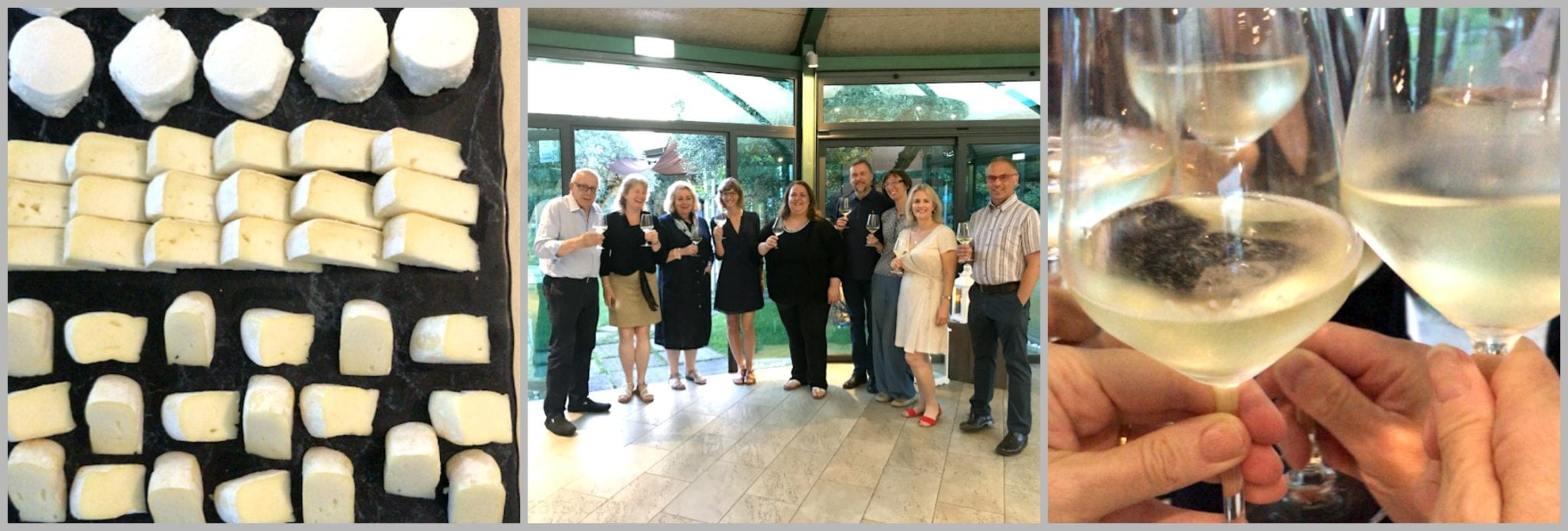
The local specialty, Bra sausage, is raw beef with pork fat. Originally it was made with just veal, and no pork for the Jewish citizens and served raw. Because the meat is ethically and sustainably raised, butchered and prepared adhering to slow food practices, I felt perfectly safe eating raw beef and pork fat! We also enjoyed local cheeses. After our mini cocktail party, we sat down to a Our first course was Fassano Crudo, (raw beef) with shaved Castelmagno cheese. This is very similar to beef steak tartare and I could have eaten two servings of this it was so delicious! The second course was the most amazing pasta I’ve ever tasted.
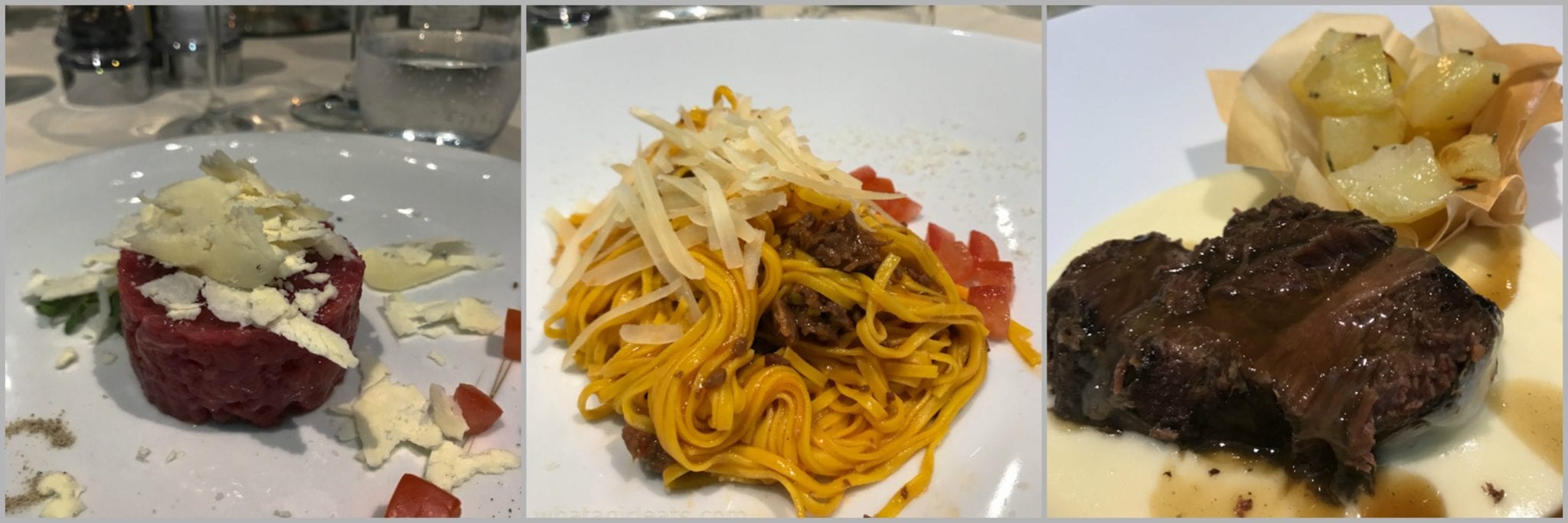
It was tagliolini with 40 egg yolks! You can tell by looking at the color of the pasta how rich it was. The ragu (sauce) was also made with Bra sausage. The third course was guanciale (beef cheeks) served with roasted potatoes. We finished with a mocha and hazelnut dessert called bunet, a spiced Barolo called Chinato and chocolate!
The meal at the Langhe lasted at least 3 hours, with the courses coming out both steadily and in modest portions. Never once did I feel too full or too rushed. This hotel was just a 15 minute drive from our first stop, Bra. It seemed as though every place we visited was just a short drive away from this centrally located hotel.
Bra, Italy, home of the Slow Food Movement
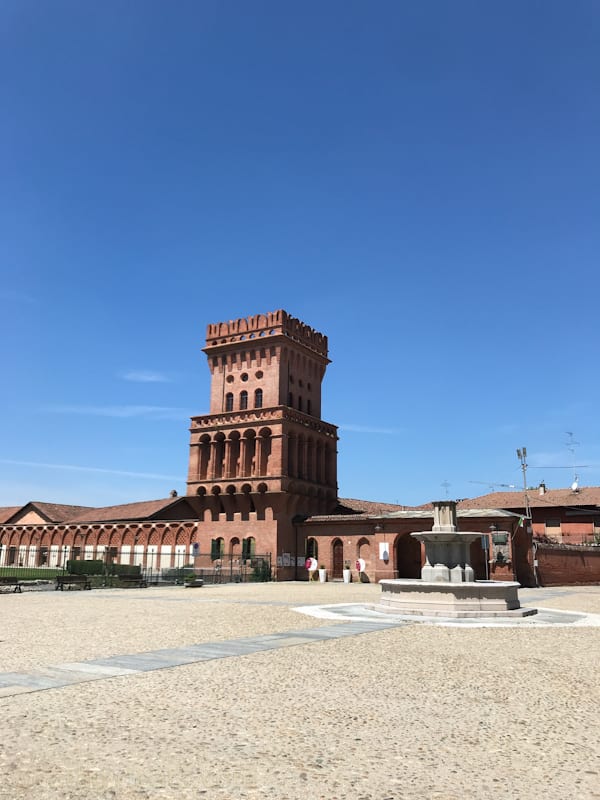
The perfect place to begin any slow food or wine tour of Italy should be Bra and Pollenzo. Our first stop was world’s first University of Gastronomic Sciences, founded in Pollenzo by Carlo Petrini in 2004.
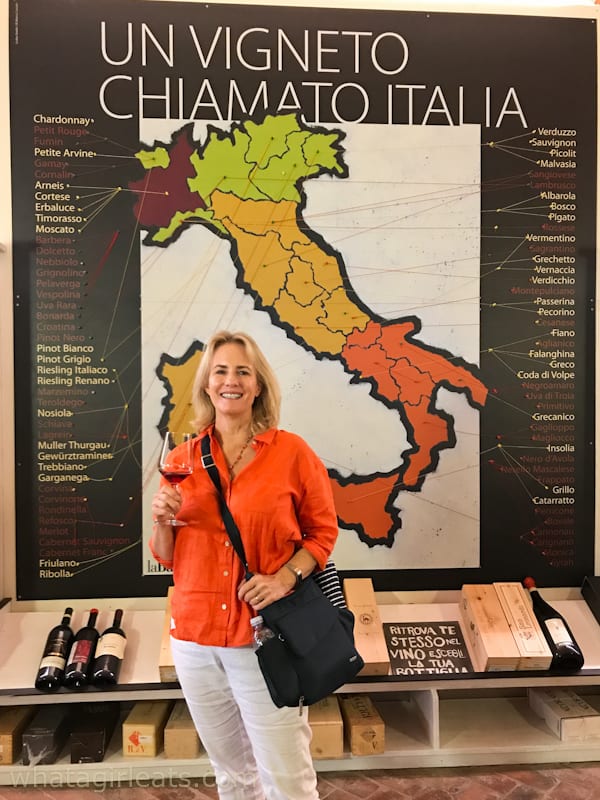
It is also a World Heritage Site. The university promotes local food and wines, as well as farming techniques, traditions and cultures of the area. Within the campus is the Banco Del Vino which holds the best of the best of Italy’s wines. The banco preserves the wines of each region, as well as a sample of the soil in which the wine was grown. A visit to the Banco del Vino weaves nicely into any Slow food and wine tour.
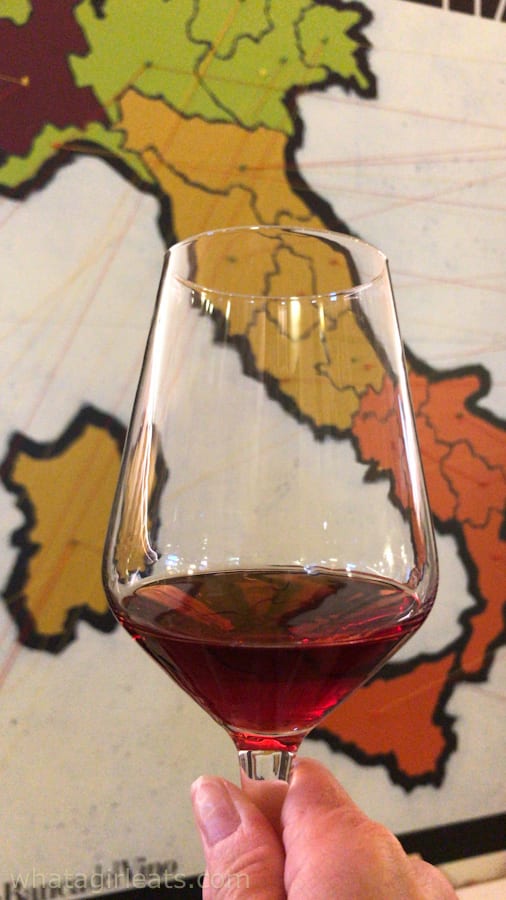
After visiting Pollenzo we headed for Bra which is where Carlo Petrini was born and started the Slow Food Movement.

Bra is famous for its Salsiccia di Bra, (see above)

The Slow Food headquarters was not open, but we were able to sneak into the courtyard. Bra is also famous for a Slow Food festival called “Cheese”, celebrating all things cheese! “Cheese” takes place every other year. We stopped in Bra for another very simple meal of meat and cheese. Christina and I shared a lovely platter.
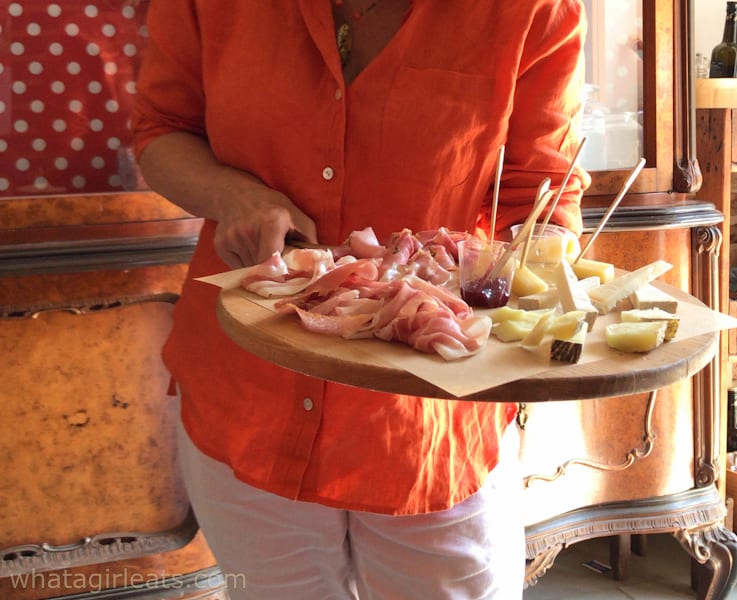
I find when I’m traveling, it’s difficult for me to eat three full meals a day, so often we’d split a meal. Plus we knew we’d be eating a multi-course supper at the Langhe later that evening. (see above)
Wines of the Langhe
Over the next two days we’d visit a couple of family run wineries in the Langhe, which exemplify the slow food and wine model. The Langhe region is known for both its Barolo and Barbaresco wines, and is one of UNESCO’s World Hertiage sites. This hilly region in Piedmont is also known for its cheeses, hazelnuts, sausage and truffles. More on that later, as we would be sampling all of these during our two days in the Langhe region.
Cadia Winery
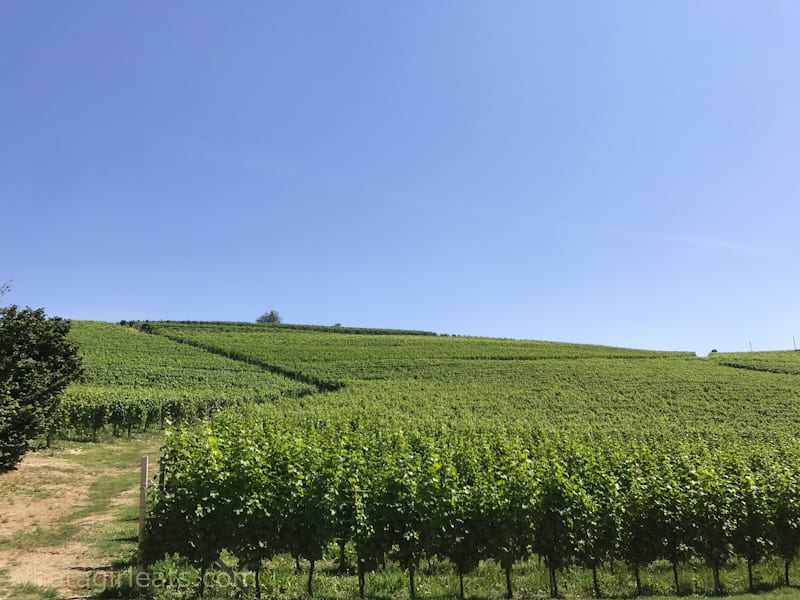
Cadia winery is named for the hill on which it sits. It’s a small family run winery that also boasts a hazelnut orchard. Although the crop is small, the hazelnuts they grow are known for being some of the best in the world! We learned that the height and color of the leaves in the fall indicates the type of vine. We learned that the nebbiolo grape is the last one to be picked each season, usually in late October.
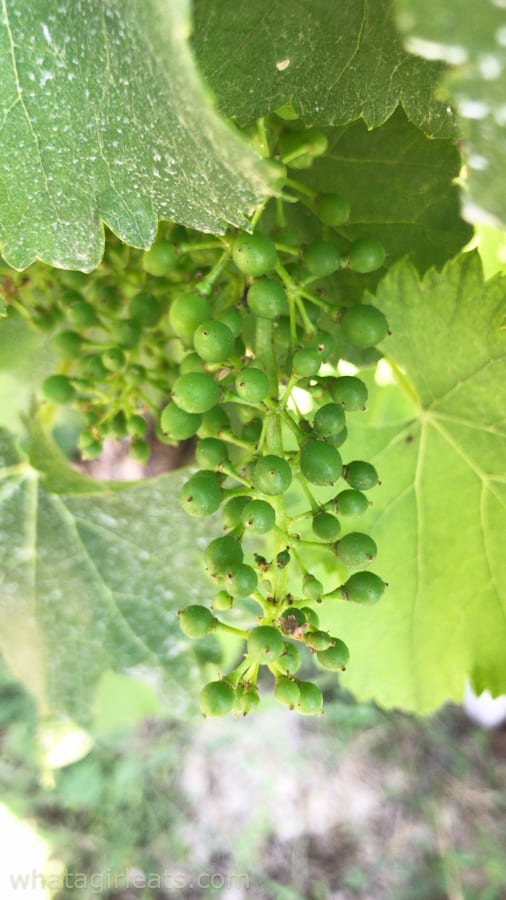
Nebbiolo gets its name from nebbia which means “fog”. The common thread in the slow food and wine movement is an appreciation and respect for the land, what grows in and on it. We found out more about the respect for the land, when we went to the hazelnut orchard adjacent to the winery. The hazelnuts are also home to the truffles, which are buried beneath the trees. This truly is a family run winery!
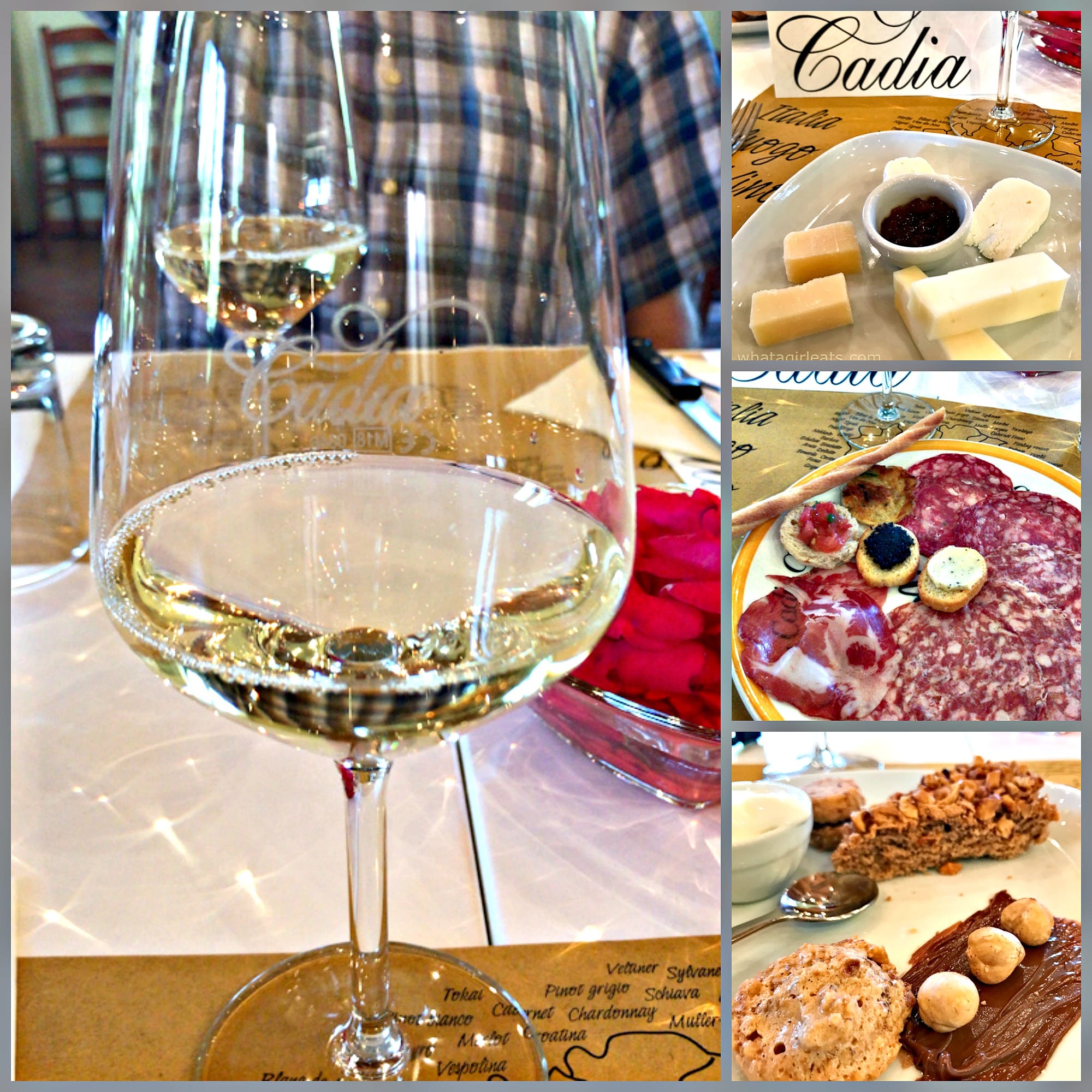
After our private tour, by daughter Noe, we went in for lunch prepared by Mariella. It was perfectly simple, yet utterly delicious. We enjoyed local salami, cheeses, bread, truffle butter, and a trio of hazelnut desserts that perfectly exemplified slow food. During lunch, Noe served us Cadia wines. Note: unlike American wineries where you can visit several in one day, the Italians believe that wine should be paired with food, therefore a tasting will be much more slow in Italy and most certainly involve food! But isn’t that the point of a Slow Food tour?
Truffle Hunting
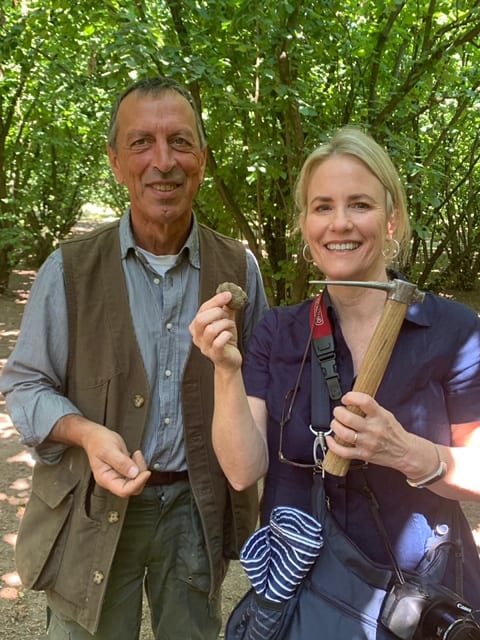
Although truffle season is in the fall, we were able to experience a truffle demonstration with Gianni and his dog, Vici. This was probably the part of the trip I was most excited to see! Located on the grounds of Cadia’s winery are hazelnut trees.
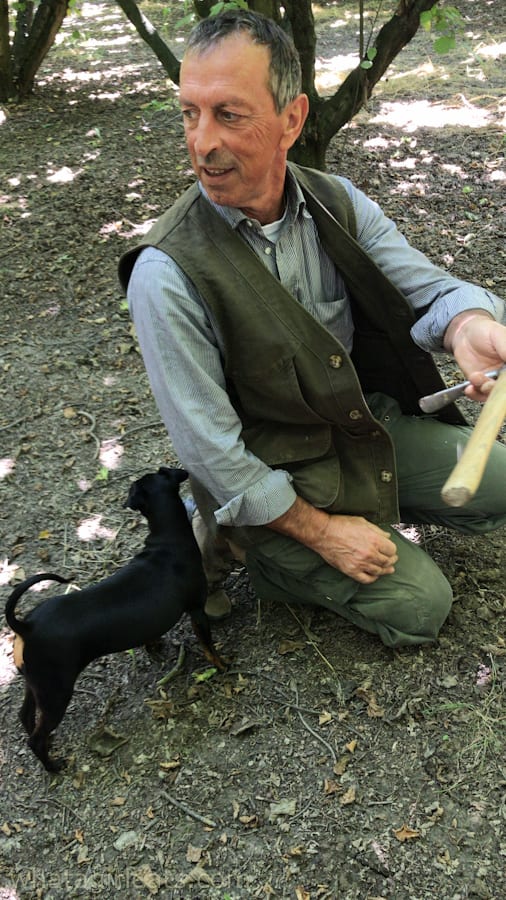
Beneath the hazelnut trees are the truffles. Even though we weren’t there at the optimum truffle hunting season, Gianni and his pup, Vici were one of the highlights of our time in the Langhe. Gianni explained, through Alice and Silvia, how the dogs are trained, what he looks for in a truffle hunting dog and how he knows almost immediately which dogs will make good hunters.

They are trained to dig for the truffles by scent, but they must only dig to let the truffle hunter know the location. Cadia allows Gianni to hunt truffles on their property. Gianni has been a truffle hunter for a long time and understands how to treat both the truffle and the land with respect. If a dog digs too deeply, the truffles will be damaged. We saw as Vici dug with gusto and then was stopped by Gianni, who then carefully dug further to reveal the truffle. Gianni also explained that after a truffle is dug up, it must be carefully brushed of dirt right at the site. Brushing the dirt off of a truffle releases the spores back into the soil thus allowing the truffles to regenerate. Younger, brasher truffle hunters will carelessly dig in order to capture the most truffles which can harm future supplies.
Fontana Fredda

If Cadia is small and family run, Fontana Fredda is the opposite! It was nice to experience two family run wineries of different sizes. Fontana Fredda is just under 30 minutes from the Langhe Cherasco hotel. It is also a family run winery which focuses on sustainable wine growing and also adheres to the traditions of the slow food movement. Their wine bottles are made of 85% recycled glass. The beautiful estate was a gift from Vittorio Emanuele II to his mistress and was built in 1858. Fontana Fredda has been making wine since 1870. The cellars at Fontana Fredda are considered among the 100 most beautiful wine cellars in the world! It is here you will taste the region’s best Barolo. The winery produces 6% of the entire production of Barolo in addition to Nebbiolo, Barbaresco, and Barbera. The grounds also boast a boutique hotel, a wine shop, and a small taverna.
What else is in the Langhe region?
Castello Grinzane Cavour
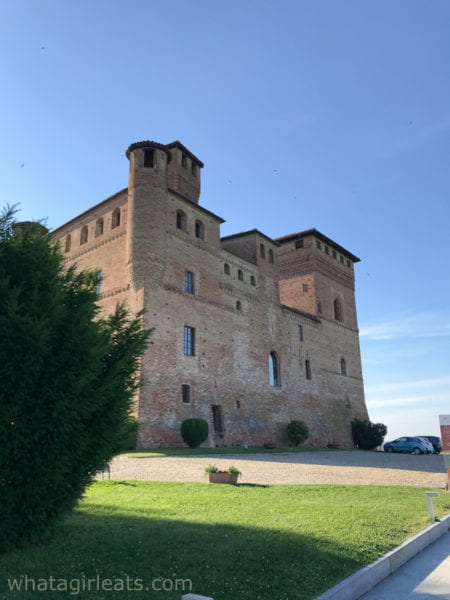
Grinzane Cavour is another location that is part of the World Heritage Sites. While we did not get a tour of the medieveal Castello di Grinzane Cavour, we walked around the cute village and enjoyed amazing views of the valley from the grounds. Tours of the castle are available for just around $7.00.
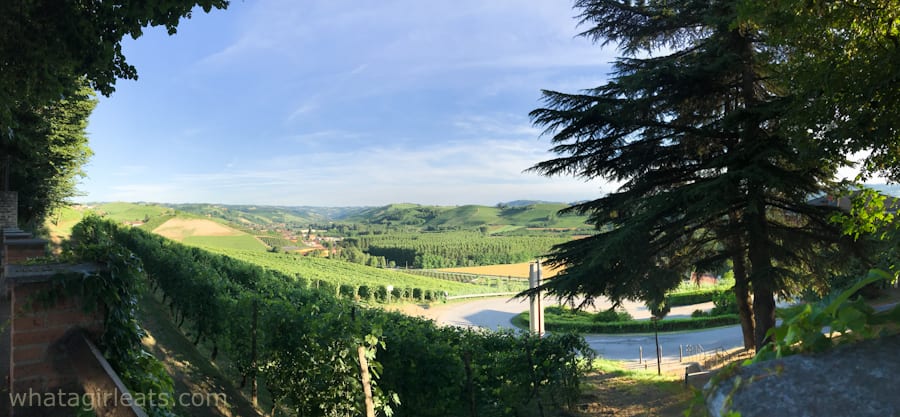
Barolo
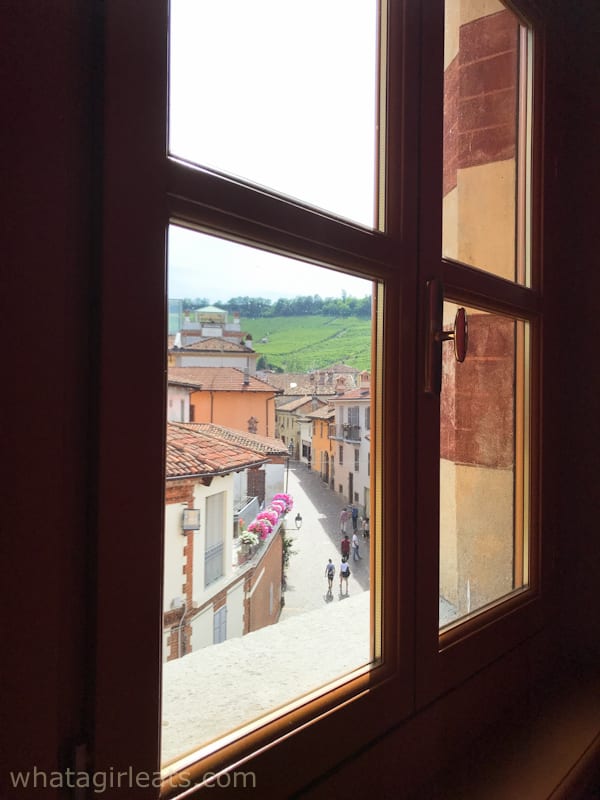
After sampling Barolo wines, you might want to visit the town of Barolo and the Wine Museum. The museum is located on top of hill and has beautiful views. The Wine Museum is a cross between a museum, with an interesting history of wine making at the very beginning of time, it also is part art gallery. Since the temperatures were well above 100 degrees F., we were more than happy to spend an hour or so in the galleries. Next we headed over to Marchesi di Barolo, another family run winery that’s been producing wines for over 200 years!
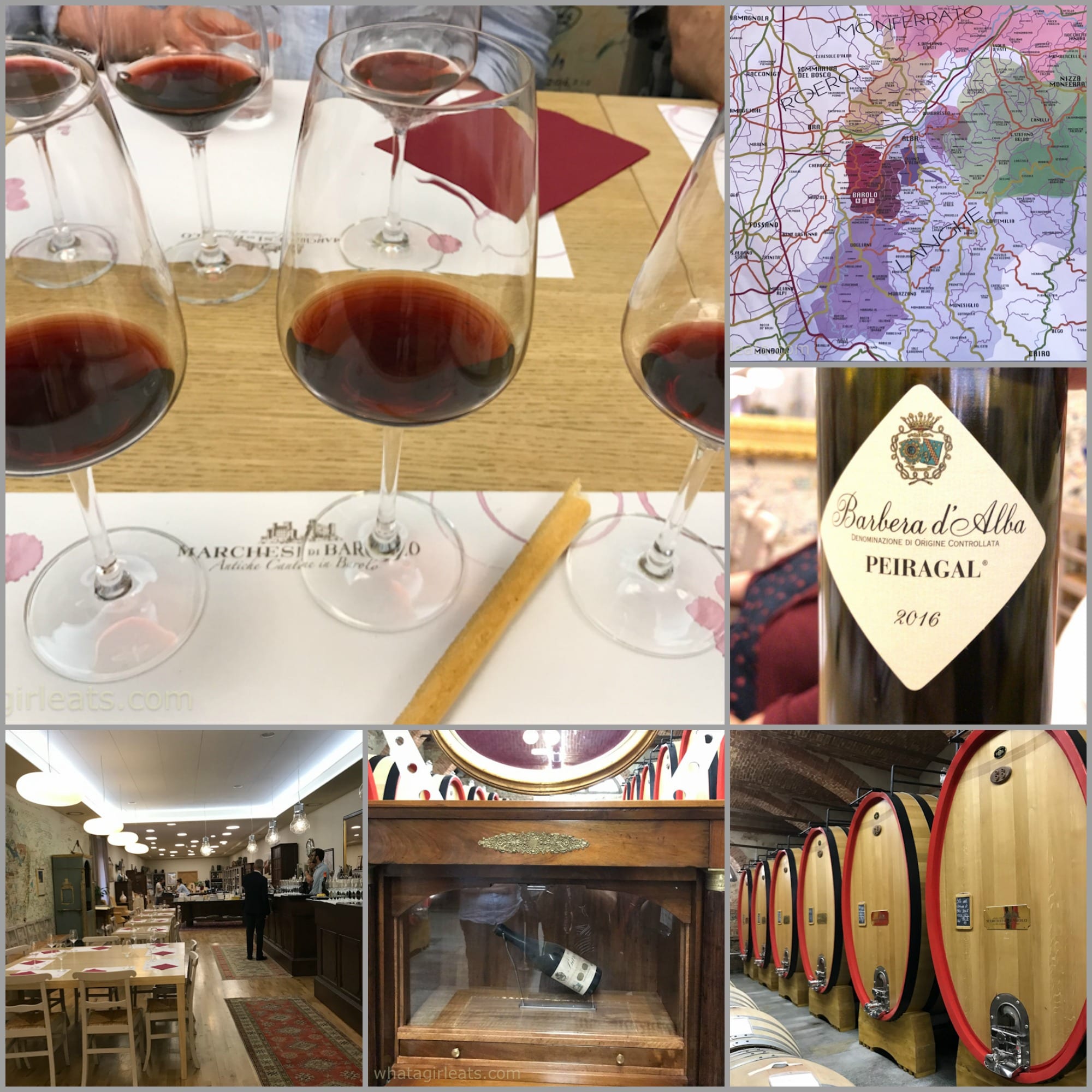
Alba
Alba is also just 30 minutes from the Best Western Langhe Cherasco. While the rest of Italy was teeming with tourists in late June, Alba was quiet and nearly tourist free…except for us!
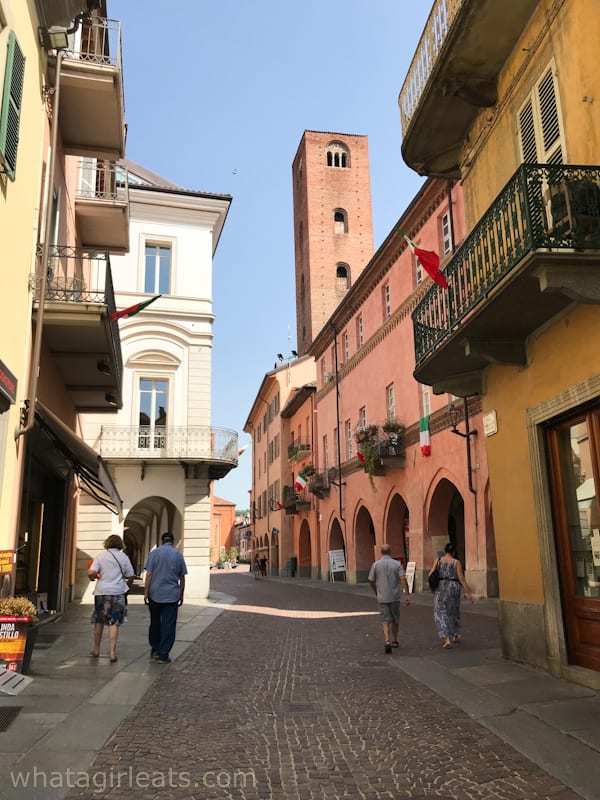
Alba is famous for its truffles and would be considerably busier during truffle season in the fall. We walked around Alba, although it was quite hot.
As you can see, all of these lovely towns are just a 30 minute drive from the Hotel Langhe Cherasco, making it a perfect hub for a slow food and wine tour of the Langhe in Piedmont, Italy.
Here is a directory of all the places we visited.

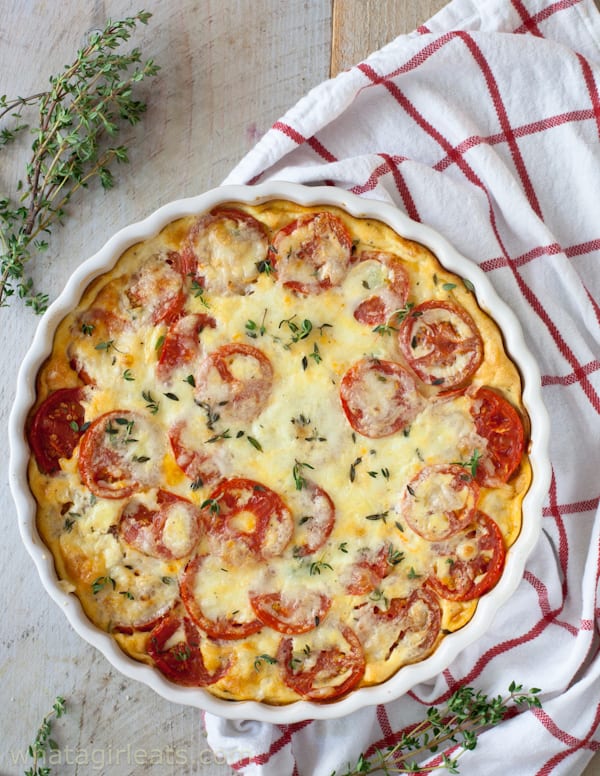
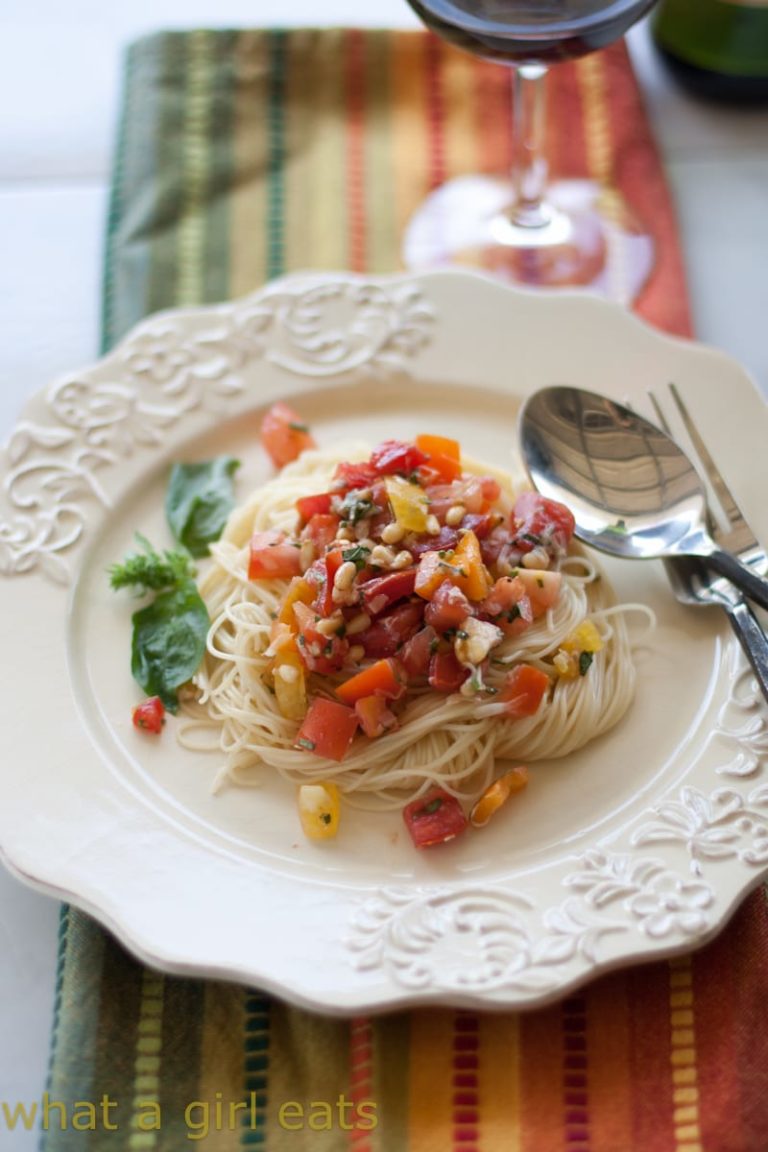
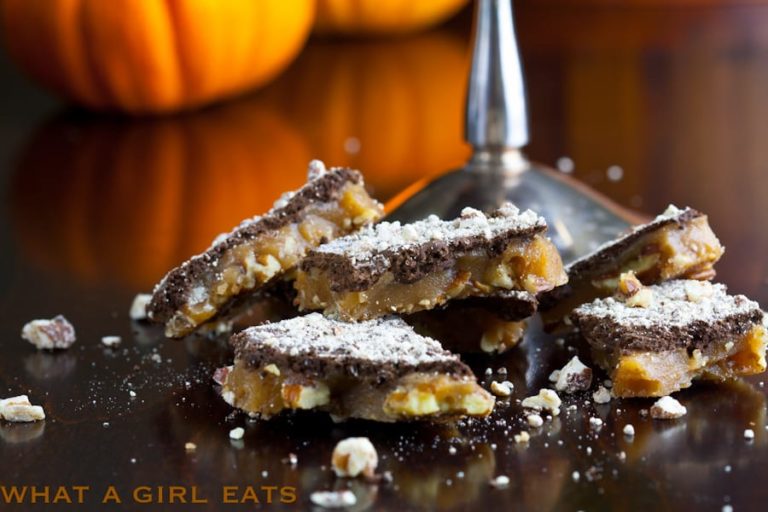
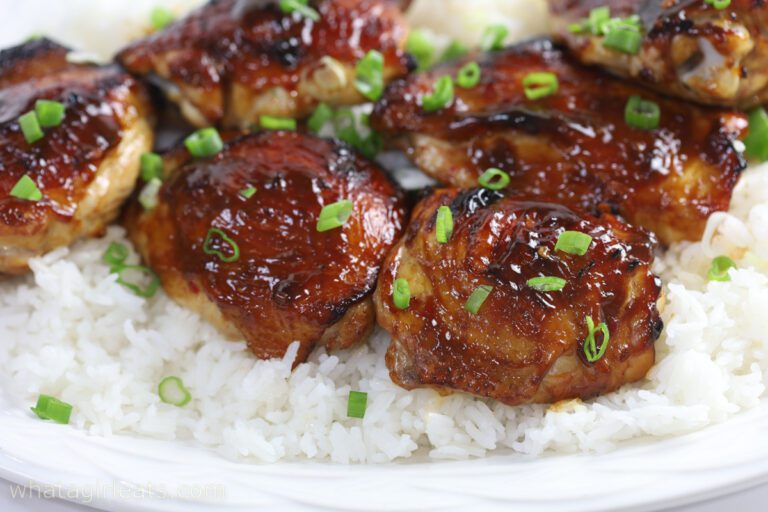
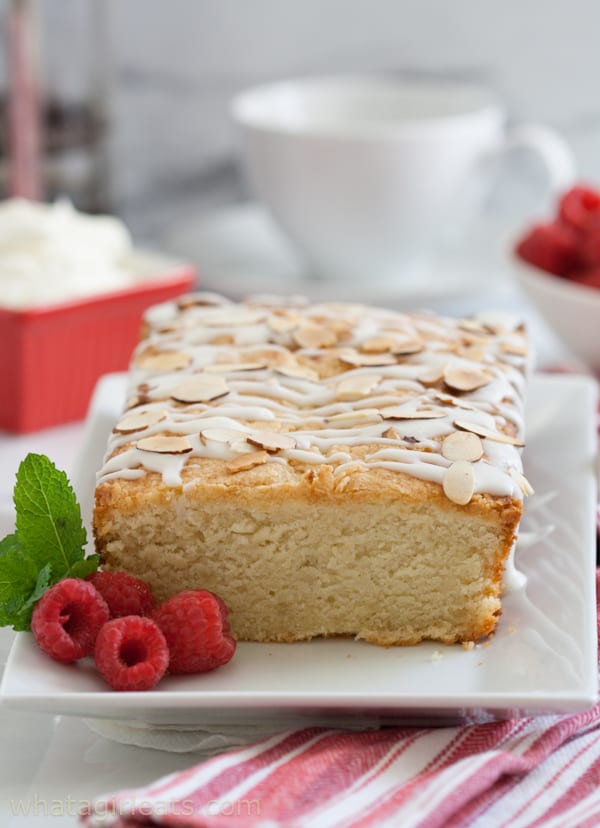
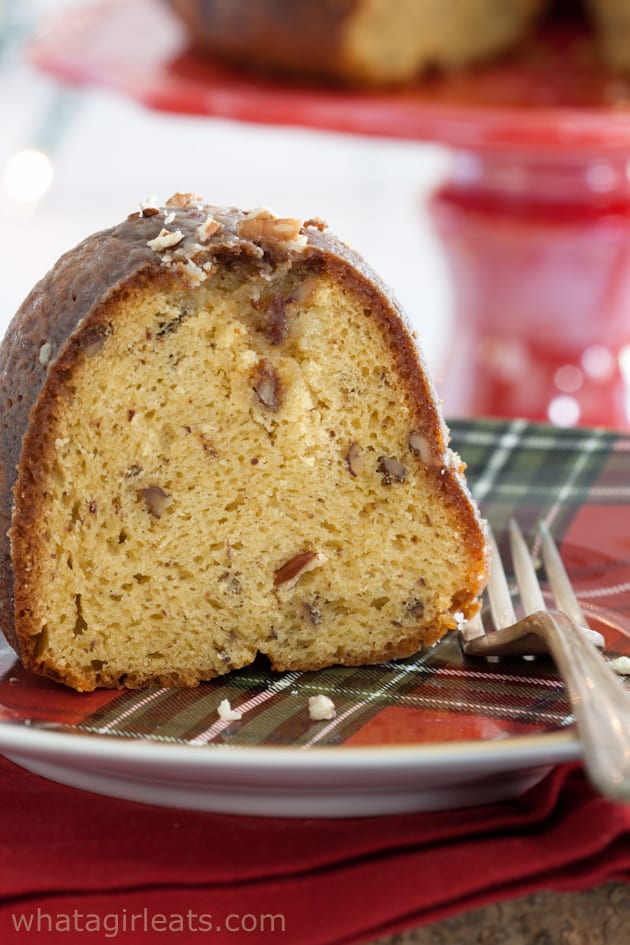
Oh goodness, what a fabulous experience! I’ve not been to that part of Italy. There’s just so much to explore. But to have a personal guide for a small group?!! That’s exciting.
It was Mimi! I can’t wait to go back again this year and discover more about the region. The Langhe region of italy has so much to offer!
What a lovely post, Cinzia! Took me right back to those lovely (but very hot) days. Thank you evoking such good times while I’m here in a wet, windy and cold London (although only until Tuesday). Hope to see you soon – maybe at Terra Madre in October?
Jan
It was such a wonderful trip and so delightful to meet you. I think we packed a whole lot of travel into just a few short days. What a wonderful area of Italy to explore. No Terra Madre for me this year…I’ll have to wait until I retire!
What a wonderful tour of a special area of Italy. Your descriptions of the area and the reverence for the land are awe inspiring.
It was wonderful! you should put it on your travel bucket list!
Definitely a must visit for anyone who’s already seen the overtouristed big cities. This is the more true and honest, down to earth Italy. Reminds me of when I used to visit over 30 years ago. I cannot wait to return!
Me too! I loved that we visited less traveled spots and the Langhe region was wonderful!
What an amazing experience! Italy sounds like a dream to visit.
It certainly was! Italy is really fabulous and the Langhe is a wonderful spot to see a relatively untouched part of Italy.
I soooo want to go to Italy! And wines are like my elixir! This is a superb article 🙂
Thank you Sushmita! Italy is for sure a bucket list country for anyone visiting Europe. I especially love this region.
Ahhh I do dream of.travelong once again. Perhaps it will happen sooner rather than later.
Yes! so much to see of Italy and the rest of Europe.
I LOVE WINE! All kinds! This seems like the place to be.
Oh yes! Italy is a wine/cheese/pasta/food lover’s dream!
Hey Cynthia, Hope you are doing well with your awesome whatagirleats blog! You have to mention historical info about the Slow Food Movement. It’s really knowledgeable in history for me. Also, Your 1min 17sec video teaches us That’s helpful. 7 people in a frame!! no comment 🙂 Best of Cynthia